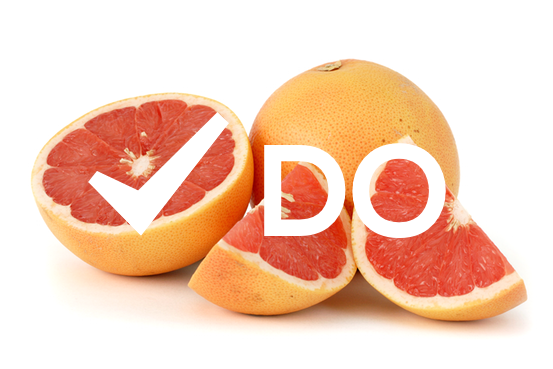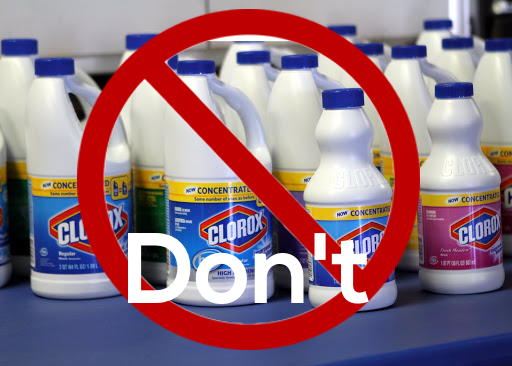The Grind of Garbage Disposals
If composting isn’t practical for you, and you hate the idea of throwing food scraps in the garbage can where they tend to—well there’s no easy way to put this—stink, consider installing a garbage disposal in your kitchen sink. The purpose of the garbage disposal is to grind food bits so they can travel down your pipes and into the sewer system without creating clogs.
Garbage disposals are usually worry-free appliances when installed correctly. The key here is proper installation. An improperly installed garbage disposal can leak, clog, cause foul odors or insufficient draining. To ensure proper installation, use a professional plumber.
You might think that a garbage disposal unit isn’t environmentally friendly and might damage a sewer system. However, most cities allow the use of garbage disposal units and a number of studies show that any potential harm to a public sewer system is minimal or none. The exception is for private septic systems which are not designed to handle food waste.
It’s convenient to flush food scraps down the drain, but it’s a convenience that requires both common sense and proper operation. Rule one: Not everything is suitable for grinding in your garbage disposal, so be careful of what you drop down into it. Maybe you’ll get away with it once or twice, but if you continue “feeding” inappropriate material down the garbage disposal, eventually you’ll be dealing with a very clogged drain. Which is what you had hoped to avoid as the reason for having the garbage disposal unit in the first place. This could mean a call to a plumber to clean out your drain and possibly even replace a damaged unit. Which means those food scraps are going to cost you more than inconvenience.
No one wants to waste money because of food waste. Let’s take a look at what you can do to ensure the proper operation and maintenance of your garbage disposal:
-
- “Dos”
- “Don’ts“
- How to clean your garbage disposal
- Resetting your garbage disposal
- When to call a plumber
Garbage Disposal Do’s and Don’ts

Garbage Disposal Do’s
If you are installing or replacing a garbage disposal unit, we recommend that you do:
-
- Follow the manufacturer’s instructions. Each garbage disposal is different; don’t assume you already know how to operate one garbage disposal because you used one previously. Failure to follow manufacturer instructors could void the warranty.
- Use a professional plumber familiar with garbage disposal installation. It is important to ensure the garbage disposal is hooked up to the plumbing and dishwasher correctly.
What you can put down the garbage disposal depends on the make and model. Modern, high-end garbage disposals can grind more types of food than basic or older models.
However, good “dos” for any kind of garbage disposal unit include:
-
- Check for items like spoons, bottle caps, jewelry and other small things before running the garbage disposal. Make sure the disposal is off and use tongs to retrieve these items.
- Do not let young children operate the disposal, or put their fingers down the disposal.
- Clean the garbage disposal regularly to prevent odors and debris build-up.
- Use cold water to flush fatty residues. Even if ground up, fats can stick to pipes further down and cause clogging.
- Grind lemon and other citrus peels to give your kitchen a fresh, clean scent that is a “peeling.”
Rule of thumb: when in doubt, do toss it in the garbage and not down your sink.

Garbage Disposal “Don’ts”
Just because your disposal can grind something down does not mean that your city waste system, let alone your home’s plumbing, can handle just about anything you shove down it. In fact, most plumbing systems cannot handle large amounts of food waste. The garbage disposal unit is intended for food scrap, not everyday garbage waste that can not only clog or even damage your plumbing, but sometimes affect the operation of the garbage disposal itself. Clogged piping means slow or stopped drains that eventually result in potentially costly repairs to remove.
There are some things that should never be put down at any garbage disposal. For one, when it is clogged, it is not usually the garbage disposal itself but the pipes that are clogged from accumulated grease and food sludge. This can lead to more problems and the need for repairs. Also, certain substances can actually cause direct damage to plumbing that requires repairs that involve more than cleaning out clogs but replacing pipes.
To keep your plumbing and your garbage disposal unit in good working order, don’t grind anything other than food scraps. It is not a trash can. Don’t put any of these down the disposal:
-
- Grease or other fats (these are sure to cause clogs).
- Metal, wood or glass.
- Cigarette butts.
- Bleach or drain cleaner.
- Coffee grounds (they cause clogs).
- Excessive amounts of pasta, rice, potatoes, potato peels, or other starchy foods that can build up in your pipes and cause clogs.
- Fibrous items like eggshells, celery, and banana peels that can potentially clog in sufficient quantities.
Also, don’t grind with hot water as it causes grease clogs. Always use cold water.
And don’t ever put your hand in the garbage disposal to retrieve fallen items. Turn off the disposal and use tongs.

How to Clean Your Garbage Disposal
Your garbage disposal unit requires regular cleaning to stay in good working order. Three of the best ways to clean your garbage disposal (no special cleaners needed!) are:
-
- Ice and Salt. Put three or four ice cubes in the garbage disposal along with rock salt. Run cold water and grind. The rough texture of the ice and salt helps loosen oil and grime from the garbage disposal.
- Baking Soda and Vinegar. Pour one cup of baking soda down the garbage disposal. Use a rubber spatula to push it through the opening. Pour one cup of vinegar down the disposal.
- Flush. Place a stopper in the sink drain. Fill the sink ¼ full of water and add a small amount of dish soap. Remove the stopper and turn on the garbage disposal to thoroughly flush your garbage disposal and pipes.
Once your garbage disposal is clean, make your kitchen smell great by grinding lemon, line, orange, or grapefruit peels.
When Your Garbage Disposal Might Need a Reset
Most modern, high-quality garbage disposals are generally easy to operate and trouble-free. If your garbage disposal isn’t working, the first thing to check is (don’t laugh, this happens) whether it somehow came unplugged.
If it is plugged in but still not turning on, look for a red or black reset button on the bottom of the unit. With certain large garbage disposal units, you may need to grab a small mirror and hold it underneath the unit to see if you can find the reset button.
If the button is popped, push it back in. This should reset the unit.
If that doesn’t work, check if the circuit breaker for the garbage disposal has tripped and reset it. If the circuit breaker hasn’t tripped, one other possibility could be that the electrical switch to the unit is in need of repair or replacement.
If none of this troubleshooting gets the garbage disposal unit working again, you might need a replacement. Call a plumber to see if this is the case.
Do Call a Plumber About Garbage Disposal Replacement
With a little time and attention to the “dos” and “don’ts” of proper maintenance, your garbage disposal should operate worry-free. Whenever it isn’t, call the friendly plumbers at Benjamin Franklin Bay Area. We’re always ready to help. We can also do a full inspection of your plumbing system, resolve your plumbing issues and advise you on how to preserve your plumbing for years to come to limit if not eliminate costly repairs in the future.


